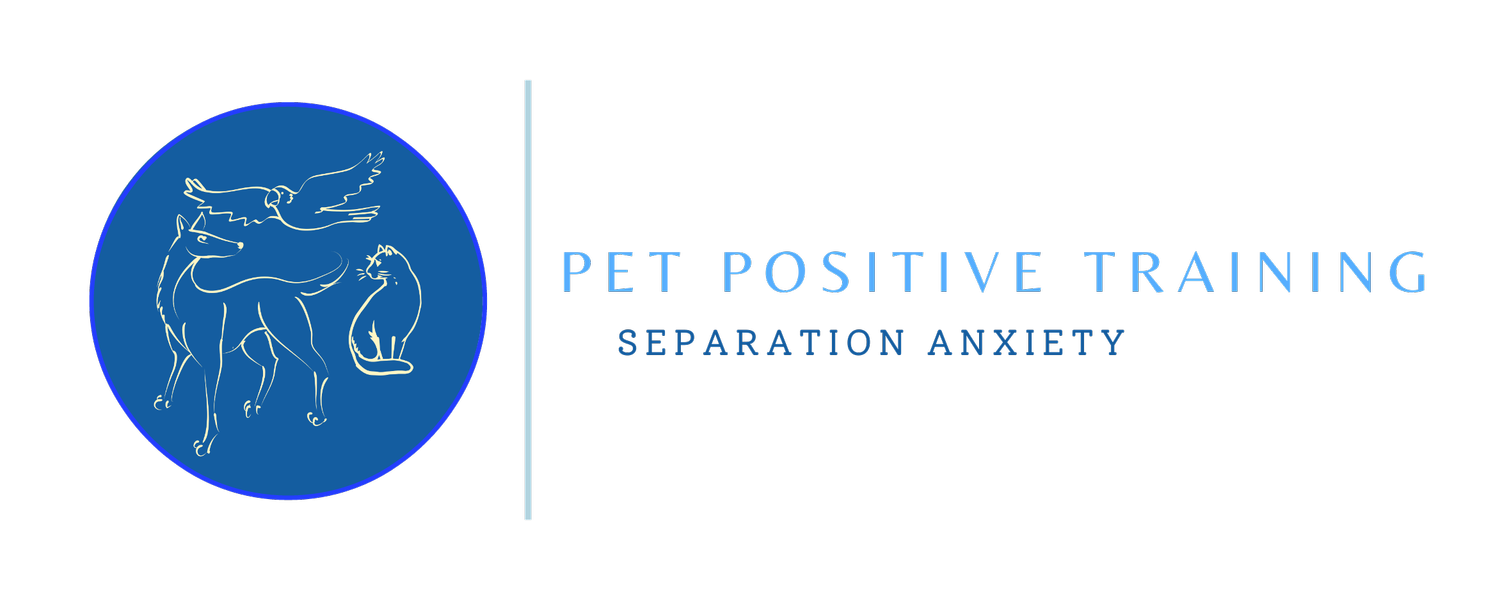How to begin separation anxiety training
Separation anxiety can be stressful to see and live with - know that it is treatable, and this is where to start.
When we talk about “dog training” the images that come to my mind automatically include sit, down, tricks, getting into a crate, and going potty in the right spot… PLUS lots of food, toys, and maybe tools like leashes, crates, platforms, baby gates, and more.
But separation training when your dog or puppy has BIG feelings about being alone is a bit different. Instead of encouraging a dog to do a behavior again in the future by giving them something they like as a consequence, we work on helping a dog realize it is safe and ok to be alone. Food or toys may not help - sometimes a dog won’t eat when alone or a dog will EAT but then be noisy or destructive the moment the food is gone. Either way - the food or toy is not helping the dog learn how safe they are.
Starting to help a dog feel better with alone time begins with 3 major parts.
Never leaving the dog alone for longer than they can handle
Learning dog body language and YOUR dog’s body language
Seeking professional help when you need it
Part 1: Suspending Absences
Friends, family, dog sitters, neighbors, other humans who like your dog are incredibly helpful here.
It may sound intense, but to begin this training you need to never leave your dog alone for longer than they can handle.
Why? Doesn’t that seem a bit… much?
This is a temporary solution to the behavior your dog exhibits. But an ESSENTIAL solution too. I like to explain why we do this with a similar example.
Trigger warning: talking about Snakes
Imagine you have a snake phobia (apologies if you do!). Even the sight of them causes some big feelings and responses. If I were to try to help you feel better about it, I might start with a still picture of a snake across the room from you. You would have the choice to look at it, then away, and maybe look at it again. If you felt safe, maybe you could look longer or get closer. Over time maybe I would switch which picture I was showing, working up to a very fake snake, working up to a real snake in a container. If one day during this process, I walked up and tossed a boa constrictor in your lap and said, “I promise it’s safe!” you might be pretty mad at me. You also might not feel safe working with me or even looking at those pictures anymore.
Leaving a dog longer than they are comfortable with is exposing them to the exact situation and sensation that they are experiencing a phobia about. That means we need avoid tossing their phobia in their lap while we work on this training; avoid leaving them. Please note - some dogs may be comfortable with a few minutes, some not even seconds. In addition to reducing the panic response, we are also ensuring that the dog never practices the undesirable behaviors we are having issues with because they are not in the situation that is causing those behaviors.
This does NOT mean you need to be with your dog 24/7. Some dogs may need help feeling comfortable with other people. Some dogs are more comfortable with other people when over at their place rather than at home. Some dogs LOVE ALL PEOPLE. Some dogs love other dogs, and some will not tolerate being stuck with other dogs. Everyone will have different ways to suspend absences and you can get creative with solutions.
Part 2: Learn Dog Body Language
How? So many options! I will list my favorites.
Knowing body language to look out for is really important for knowing how your dog is feeling. Dogs often show of signs that they are uncomfortable even before they start barking or whining (or other undesirable behaviors).
A Trainer who bases their training in positive-reinforcement and science-based techniques
Trainers can be incredibly helpful in helping you figure out what your specific dog’s body language means for them. While dog body language is generally similar, how much stress one dog who “nose licks” is under may be different from another dog who “nose licks.” A trainer may be able to help you sort through the signs your dog is showing off.
Lili Chin’s book “Doggie Language”
Positive-reinforcement and LIMA trainers on youtube, instagram, and youtube
Kikopup
Eileenanddogs
School of Canine Science
For a REAL SCIENCEY DEEP DIVE - Canine Behavior: A Photo Illustrated Handbook by Barbara Handelman, M.Ed, CDBC
Part 3: Finding Help When You Need It
I can help and so can other amazing professionals.
Veterinarians - I cannot stress enough how important and helpful it can be to have your veterinarian in the loop about what your dog is doing at home alone. They can help rule out other medical reasons that there may be an issue and help determine what the issue might be. That being said, if you want to hear another’s opinion - it is OK to seek a second opinion.
Veterinary Behaviorists - You can also seek the help of a Veterinary Behaviorist who is a veterinarian who specializes in behavior issues, where they stem from, and how to solve them. Some veterinarians can be fantastic at diagnosing a physical issue and may not be as fluent in solutions to behavior. Some vet behaviorists can even consult with your primary vet remotely about your case without you needing to go directly to the vet behaviorist. ***NOTE: a VETERINARY Behaviorist is different from just a “behaviorist.”
Dog/Pet Trainers - Make sure to seek out positive-reinforcement and LIMA trainers. Separation behavior issues stem from panic, fear, and generally “irrational,” over-the-top emotions. That means that you need a trainer, like me, who can help you navigate how to help your dog with the root of the problem - phobia of being alone. Avoid trainers who focus on stopping the behavior without helping your dog learn to feel safe. Certified Separation Anxiety Trainers (CSATs) are experts in separation issues specifically - not all pet trainers will take on separation issues because it requires an in-depth understanding to work with and a very careful approach unique to each individual dog.


